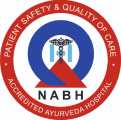



Ayurveda holistic treatment regimen offers the greatest chance of success with Parkinson’s patients
AyurVAID Hospitals is now a part of Apollo Hospitals Group.
Parkinson’s disease is a neurological disorder affecting 1% of the population over age 65 and is the fourth most common neurological degenerative disorder found in the elderly. The defining feature of parkinsonism is bradykinesia, or slowness with decrement and degradation of repetitive movements (“fatigue”) but Parkinsons’s present with tremors, rigidity and bradykinesia. In Ayurveda Parkinsonism is mainly known as Kampavata, Which is one among Vatavyadhi. Due to aggravated chalaguna of vatadosha the onset of disease begins and exhibits.
Ayurvedic treatment for this condition centers around the treatment of vata disturbance. Oleation and fomentation form the basis of the constitutional treatment (4). Oleation through massage (abhyanga) and enema (basti) are indicated as well as the ingestion of oils. Naturally, jatharagni must be strong enough to support such a heavy regimesn. If the patient exhibits significant ama and is strong enough, gentle purification procedures should be administered first.
Oils medicated with ashwagandha (withaniasomnifera) and bala (sidacordifolia) are commonly used to pacify vata and build ojas. They are known to rejuvenate with a strong nourishing action on the nervous system. The herb atmagupta (MucunaPruriens – also known as Kappikacchu) has received a lot of attention historically and again in recent years. Ayurveda teaches that a holistic treatment regimen offers the greatest chance of success with Parkinson’s patients.
A vata pacifying diet and proper dietary habits are essential to long-term success. Additional vata pacifying regimens including daily oil massage (applied by the patient or practitioner) and sensory therapies complete the treatment regimen.
AyurVAID is India’s 1st Ayurveda hospital to be accredited by NABH (National Accreditation Board for Hospitals & Healthcare Providers), Quality Council of India.
Diagnosis is based primarily on signs and symptoms. Resting tremors (tremors which occur when the body is at rest and there is no voluntary initiation of motion) along with rigidity, loss of facial expression or gait abnormalities strongly suggests the disease. As only 70% of patient’s exhibit tremors, the other 30% of the cases are more difficult to diagnose (1). This condition may be confused with other causes of tremors, depression and gait abnormalities.

Tremor: this can affect the hands and feet. Tremor is most marked at rest and actually improves when performing a task. Another condition known as essential tremor (ET) is often misdiagnosed as Parkinson's as it too causes a tremor, but one which is absent at rest and most marked when performing a task
Muscular rigidity: this causes stiffness during movement
Bradykinesia: this causes lowness and tends to make initiating movements very difficult.
We work towards whole person health through classical Ayurveda science. Our Ayurveda case studies are the first-line evidence in Ayurvedic medical literature as they present the original observations from our Ayurveda practitioners. The case studies are published taking patient’s consent and maintaining patient anonymity.